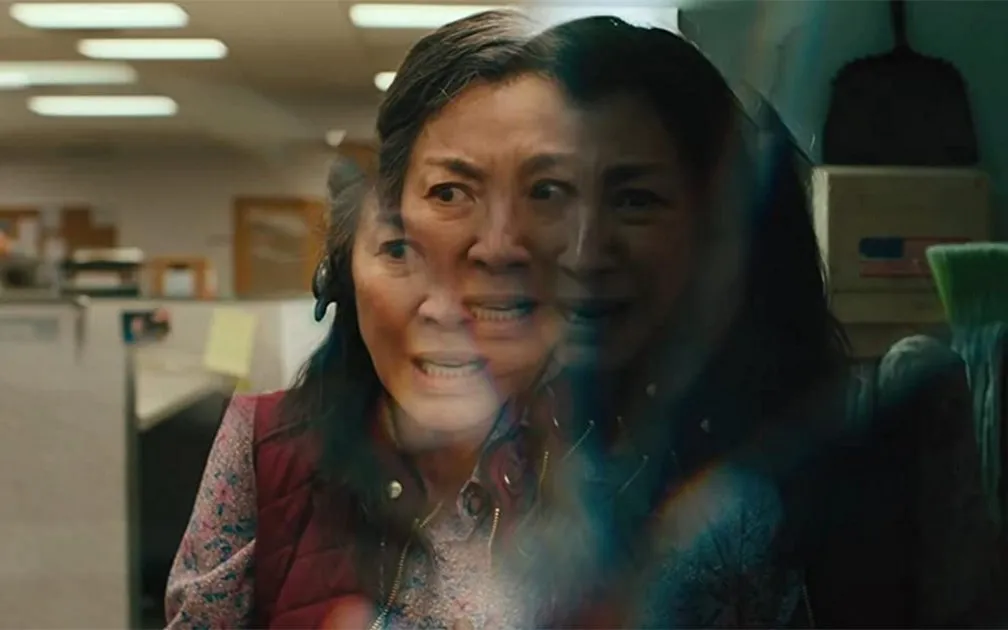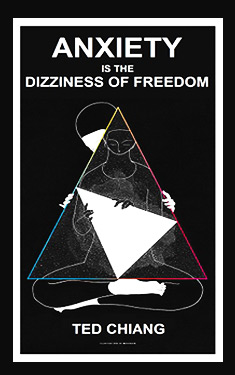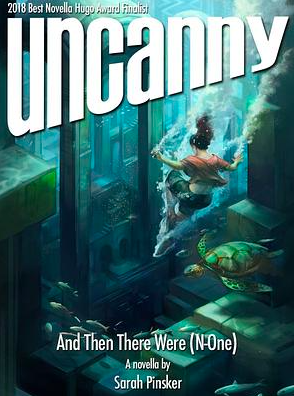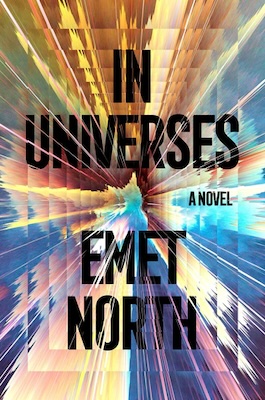Reading Lists
9 Books About Multiverses
How many of us grow up living one life while dreaming of another?

In April of 1956, as a PhD student in the physics department at Princeton, Hugh Everett III finished writing Wave Mechanics Without Probability. The paper received little attention at the time (due perhaps to its extremely boring title); later, however, it would gain acclaim as the foundational text for the Many-Worlds Interpretation of quantum mechanics. The Many-Worlds interpretation was an attempt to resolve the strangeness that lives at the heart of quantum mechanics—namely the fact that it requires particles to exist in contradictory states at the same time. Schrödinger’s cat, the archetypal example, is both dead and alive simultaneously. But Everett’s formulation offered an alternative interpretation: the cat is dead in one universe, alive in another. The mathematical equations do not imply simultaneous co-existence in one universe, they imply co-existent parallel universes.
I wrote a version of the above for the first time nearly fifteen years ago, as the opening to my college thesis. I was living something close to the life I’d always wanted—a career path that made people say wow you must be so smart, a relationship that helped me convince myself I was lovable—and I was miserable. I could barely understand my own research; I felt a lingering discontent in my relationship that I couldn’t explain. Perhaps it’s no surprise that the idea of infinitely proliferating alternate universes captivated me, but it took writing a book about it for me to see the connection clearly.
My novel, In Universes, is the story of a failing physicist who becomes enamored with the idea of the multiverse—a fixation that ultimately sends the narrator careening across alternate worlds. It’s a story of the disconnect between what we’re taught to want and what we truly desire. A story about queerness, guilt, inherited trauma, and, ultimately, the joy of belonging.
There is something fundamentally queer, to me, about the multiverse. How many of us grow up living one life while dreaming of another? Fearing it, wanting it, living half in the real world and half in a parallel one. But of course the multiverse offers itself up as a metaphor in so many ways, as evidenced by the books below.
The Space Between Worlds by Micaiah Johnson
A tech billionaire has invented a machine that lets people travel to alternate worlds. But there’s a catch—if you try to visit a parallel world where you’re still alive, you die. Enter Cara: a self-proclaimed “garbage git” who lives in the dystopic conditions outside the walls of the wealthy Wiley City and whose parallel selves are nearly all dead. The book offers a fast-paced, whip smart plot, sharp social commentary, and a fascinating exploration of how we are made and unmade by our circumstances: “Even if you think you know yourself in your safe glass castle, you don’t know yourself in the dirt. Even if you hustle and make it in the rough, you have no idea if you would thrive or die in the light of real riches, if your cleverness would outlive your desperation.”
Those Beyond the Wall by Micaiah Johnson
Those Beyond the Wall, Johnson’s newly released second novel, is set in the same world though it’s an entirely distinct story. While the multiverse is slightly less of a focus, it still plays a central role in the plot, which follows a character called Scales as she tries to discover why people in her community are dying in a strange and brutal way. It’s a novel about the power of story—those we tell ourselves, those we tell others, and those others tell about us. It is a book with rage at its core. In an introductory note, Johnson says, “Anger with a target is Rage, and Rage is sister to Hope alone. We rage because we do believe things can be better, by fire if necessary.” This is a book that insists on the possibility of better futures while refusing to look away from the brutality that is sometimes required to get there. A brilliant depiction of a morally complex character, with an ending I’m still thinking about months later.

Anxiety is the Dizziness of Freedom by Ted Chiang
Time and again, I’m blown away by how Ted Chiang manages to take a science lesson and transform it into a brilliant story, and this novella is no exception. Set in a world where there are devices that allow you to communicate with your parallel selves, the story is both a remarkably clear explanation of the many worlds interpretation of quantum mechanics and an exploration of what it might mean to try to understand ourselves as multiple rather than singular.
Present Tense Machine by Gunnhild Øyehaug, translated by Kari Dickson
This slender novel, translated from Norwegian, is delightfully weird. It follows the lives of Anna and her daughter Laura, who were split into parallel universes when Anna—a writer and translator—misread a word in a poem. Trädgård, Swedish for garden, becomes the nonsense word tärdgård. “Misreadings like this,” a mysterious narrator informs us, “often result in new words that have never existed before, brand-new creations that have no direct meaning, that point toward a nothingness, to put it another way, toward something incomprehensible, toward a potential word that might have existed if only someone had thought of it.” And in this specific instance what might have existed opens a doorway to a parallel world—a doorway through which three-year-old Laura disappears. This is a novel that offers more questions than answers, closer to poetry than fiction in its movements. A very brief chapter entitled “The Horses” begins: “This is the twenty-third chapter. There’s practically no one here, only some horses standing sleeping.” It’s a book for anyone who has had the sense that something inexplicable is missing from their life.
Many Worlds: Or, the Simulacra edited by Cadwell Turnbull and Josh Eure
According to the opening of this anthology, the stories within it “have been gathered from across the Simulacra and, taken together, they illustrate a burgeoning, if inchoate, awareness of the Simulacrum, emerging without coordination or communication across universes, across writers, across minds.” Each chapter offers a different view of said simulacra—a collection of worlds where nothing is quite what it seems and where people, places, and events shift in ways that only the most observant notice.
Meet Me in Another Life by Catriona Silvey
What if two people could be everything to one another: friend, lover, sibling, caregiver, parent, and on and on? We see the main characters of Silvey’s novel, Thora and Santi, in all of these permutations and more. Perhaps most impressive is the way the characters feel both distinct and consistent across universes: recognizably themselves but also authentically altered by their changing circumstances. But the novel is more than a character study. At its heart is a mystery whose answer beautifully brings together the novel’s disparate worlds.
Mr. Fox by Helen Oyeyemi
In a way, any piece of fiction is a kind of collapsed multiverse. An author, imagining a story, dreams of different possibilities. Each draft, a slightly different world. In Oyeyemi’s brilliant and bewildering novel, we’re introduced to a writer named St. John Fox, his wife, Daphne, and the muse he’s dreamt up for himself, Mary Foxe. Mary, refusing the constraints of St. John’s imagination, decides to teach him a lesson about killing off his female characters. Thus commences a series of dueling stories, often (always?) inspired by Bluebeard-esque fairytales, within which Mary and John cast each other as different characters across a wild array of fictional worlds.

And Then There Were (N-One) by Sarah Pinsker
If you received an invitation to a convention where you could meet all your alternate selves, would you attend? In this novella, Sarah Pinsker the writer tells the story of Sarah Pinsker the character saying yes to such an invitation and heading to an island off the coast of Novia Scotia for Sarah-con. There’s a real playfulness to the story, as it delves into the nitty gritty of what it means to try to differentiate oneself in a room filled with people who share your name and face. But when one of the Sarahs shows up dead things take an Agatha Christie turn, as our narrator-Sarah—an insurance investigator—tries to figure out which of the other Sarahs might be capable of murder.
This Is How You Lose the Time War by Amal El-Mohtar and Max Gladstone
In this epistolary novel, Red and Blue are agents for opposing factions in a war that takes place across branches of the multiverse. While there’s an intricate and satisfying plot, the novel’s primary delight for me is the relationship between the two agents, who pursue one another across universes, leaving notes in wildly elaborate code: grown into the circles of a tree’s rings, transmitted by the stings of bees. It’s an effusive, effervescent novel, and one that I turn towards when I need to be reminded that there are always more hopeful endings than we might first imagine.
(And if you don’t want to take it from me, take it from this extremely viral tweet.)









